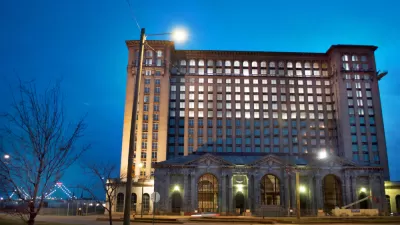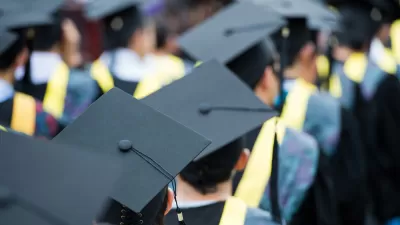Buffalo made its fortune in long-gone heavy industries such as steel. Now a new industrial revolution—in renewable energy—is bringing new life to the coldest, northernmost city of the American Rust Belt.

Now, things are turning around. Aided in part by a $1 billion redevelopment assistance plan from the state, the Buffalo region now has a healthy 5.3 percent unemployment rate. Some of those jobs are at high-tech companies, including Yahoo, that are capitalizing on the region's cheap energy, powered by Niagra Falls, which the defunct factories no longer use. Cheap real estate doesn't hurt either. Equally importantly, an emerging industrial economy is taking the place of the old one, building turbines and windmills near places that used to make girders and rails. There's a green energy complex, and the solar power company SolarCity has built a factory.
"Under the [redevelopment] plan, developed after a study from the Brookings Institution along with local community and business organizations, the state is trying to seed a cluster economy, Gov. Andrew Cuomo said, targeting several areas, including advanced manufacturing, health and life sciences and tourism. Seeing the opportunities for renewable energy came out of that process."
While the region has an extensive industrial infrastructure, it also has a robust social infrastructure, which has stuck around since Buffalo's heyday.
"Despite the long decline, much of that infrastructure remains — including transmission and rail lines, professional schools and fine art museums. All of that, along with generous government subsidies, is proving attractive to new industries like clean energy and advanced manufacturing."
The city is even attracting hipsters.
"Nowhere is the transformation more evident than in Larkinville, a collection of 19th-century buildings once clustered around the Larkin Soap Company that has become a work, entertainment and dining destination inspired by similar districts like Dumbo and Williamsburg, Brooklyn."
FULL STORY: The Wind and Sun Are Bringing the Shine Back to Buffalo

Maui's Vacation Rental Debate Turns Ugly
Verbal attacks, misinformation campaigns and fistfights plague a high-stakes debate to convert thousands of vacation rentals into long-term housing.

Planetizen Federal Action Tracker
A weekly monitor of how Trump’s orders and actions are impacting planners and planning in America.

In Urban Planning, AI Prompting Could be the New Design Thinking
Creativity has long been key to great urban design. What if we see AI as our new creative partner?

King County Supportive Housing Program Offers Hope for Unhoused Residents
The county is taking a ‘Housing First’ approach that prioritizes getting people into housing, then offering wraparound supportive services.

Researchers Use AI to Get Clearer Picture of US Housing
Analysts are using artificial intelligence to supercharge their research by allowing them to comb through data faster. Though these AI tools can be error prone, they save time and housing researchers are optimistic about the future.

Making Shared Micromobility More Inclusive
Cities and shared mobility system operators can do more to include people with disabilities in planning and operations, per a new report.
Urban Design for Planners 1: Software Tools
This six-course series explores essential urban design concepts using open source software and equips planners with the tools they need to participate fully in the urban design process.
Planning for Universal Design
Learn the tools for implementing Universal Design in planning regulations.
planning NEXT
Appalachian Highlands Housing Partners
Mpact (founded as Rail~Volution)
City of Camden Redevelopment Agency
City of Astoria
City of Portland
City of Laramie





























